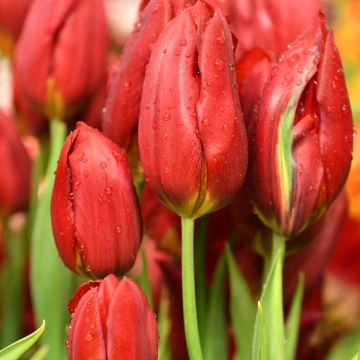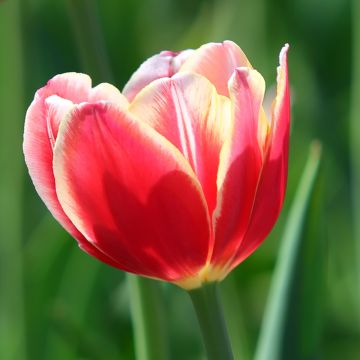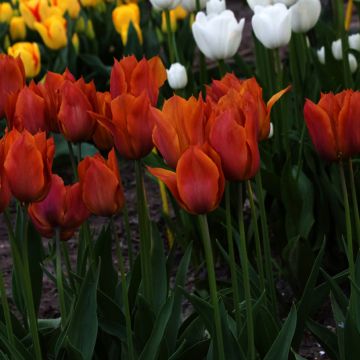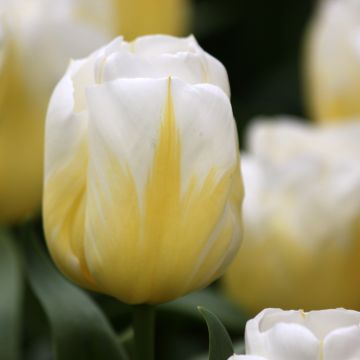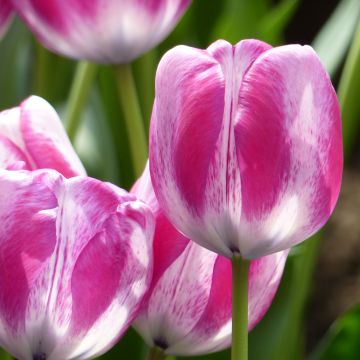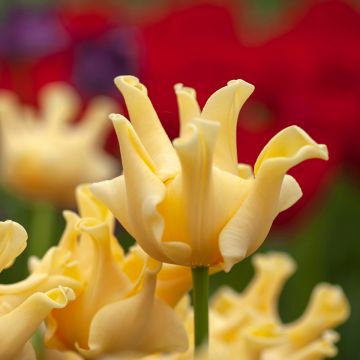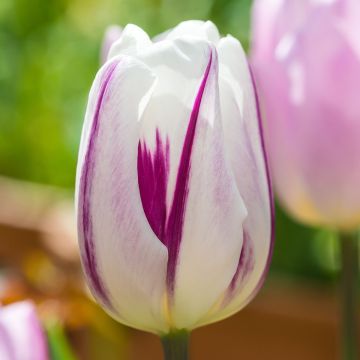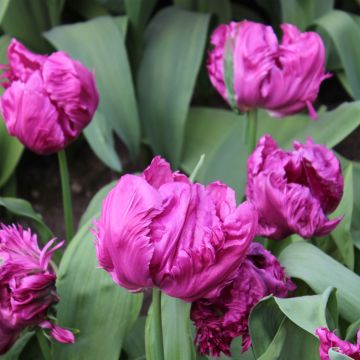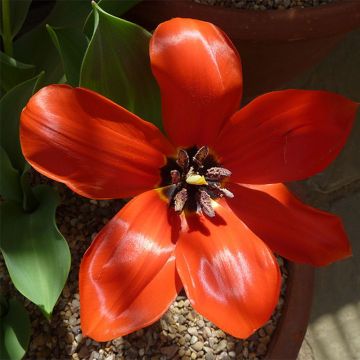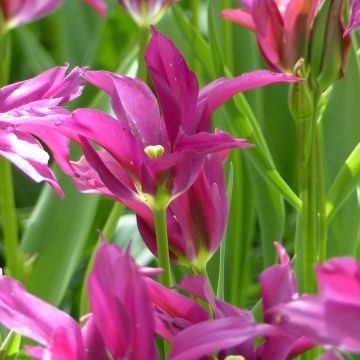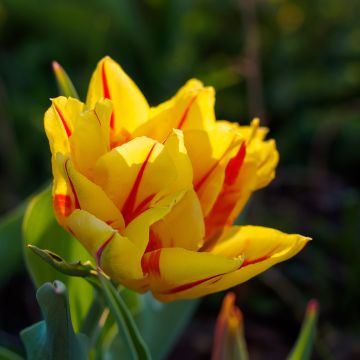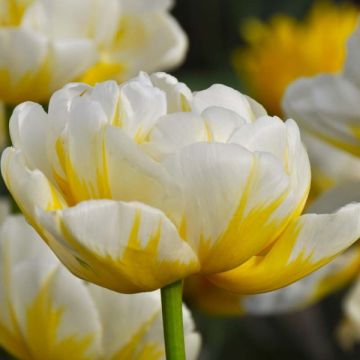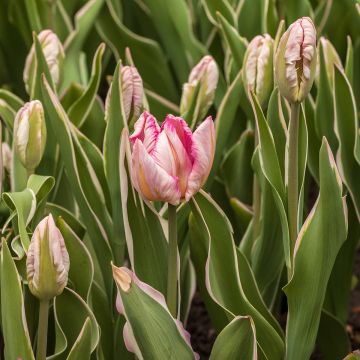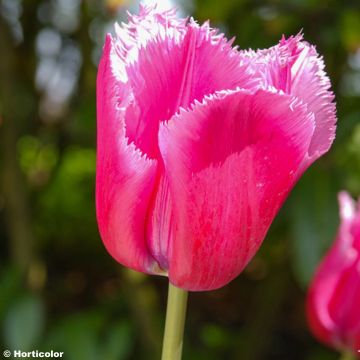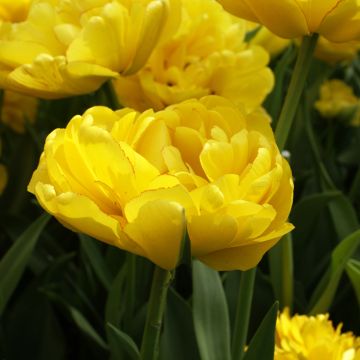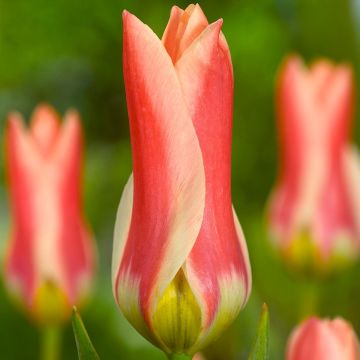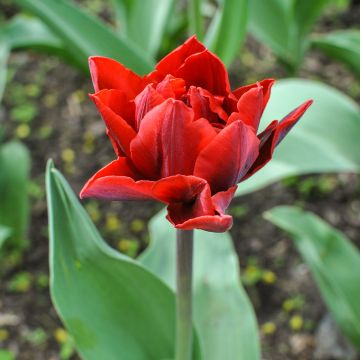Shipping country and language
Your country of residence may be:
Your country of residence is:
For a better user experience on our website, you can select:
Your shipping country:
Andorra
Austria
Belgium
Bulgaria
Canada
Chile
Croatia
Cyprus
Czechia
Denmark
Estonia
Finland
France
Germany
Greece
Hungary
Iceland
Ireland
Italy
Latvia
Lithuania
Luxembourg
Malta
Monaco
Netherlands
Poland
Portugal
Romania
Slovakia
Slovenia
Spain
Sweden
Switzerland
United Kingdom
We only deliver seed and bulb products to your country. If you add other products to your basket, they cannot be shipped.
Language:
French
German
Spanish
English
My Account
Hello
My wish lists
Plantfit
Log in / Register
Existing customer?
New customer?
Create an account to track your orders, access our customer service and, if you wish, make the most of our upcoming offers.
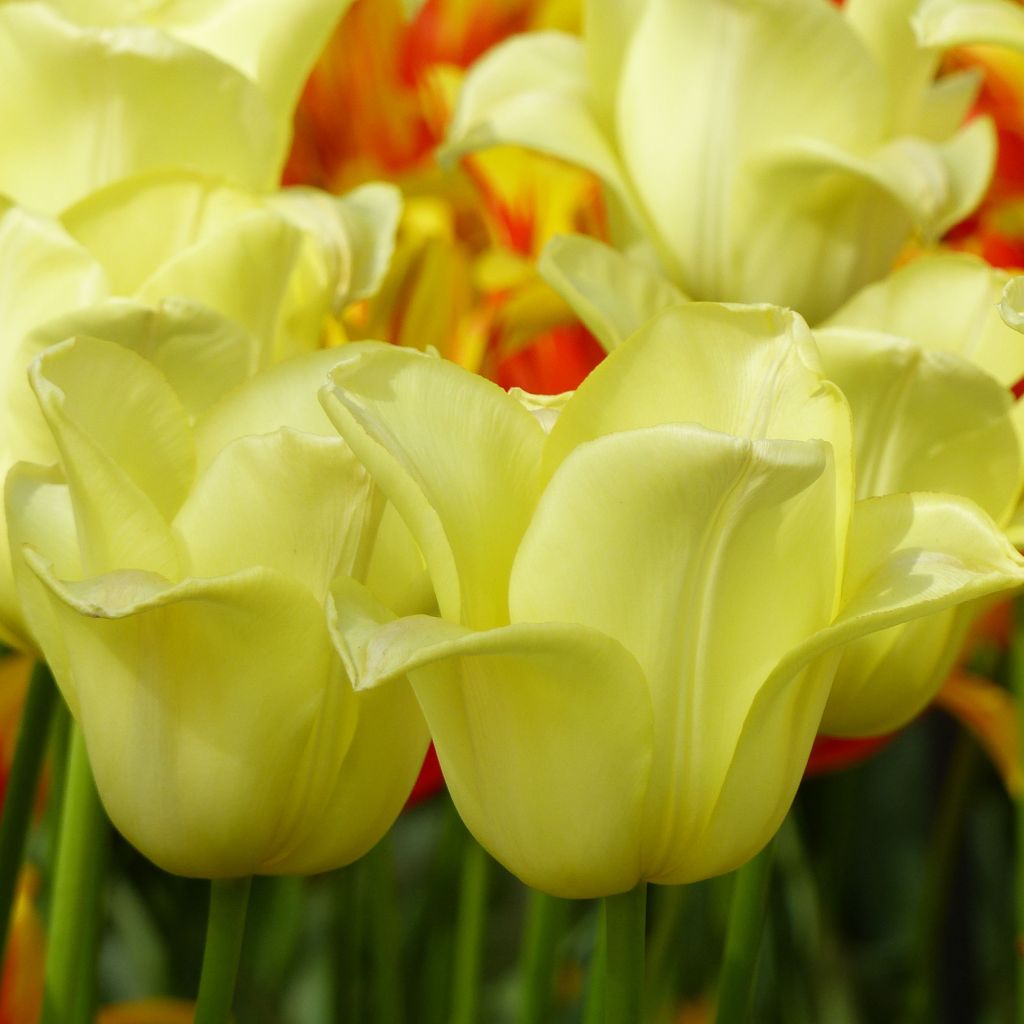

Tulipe Triomphe World Friendship
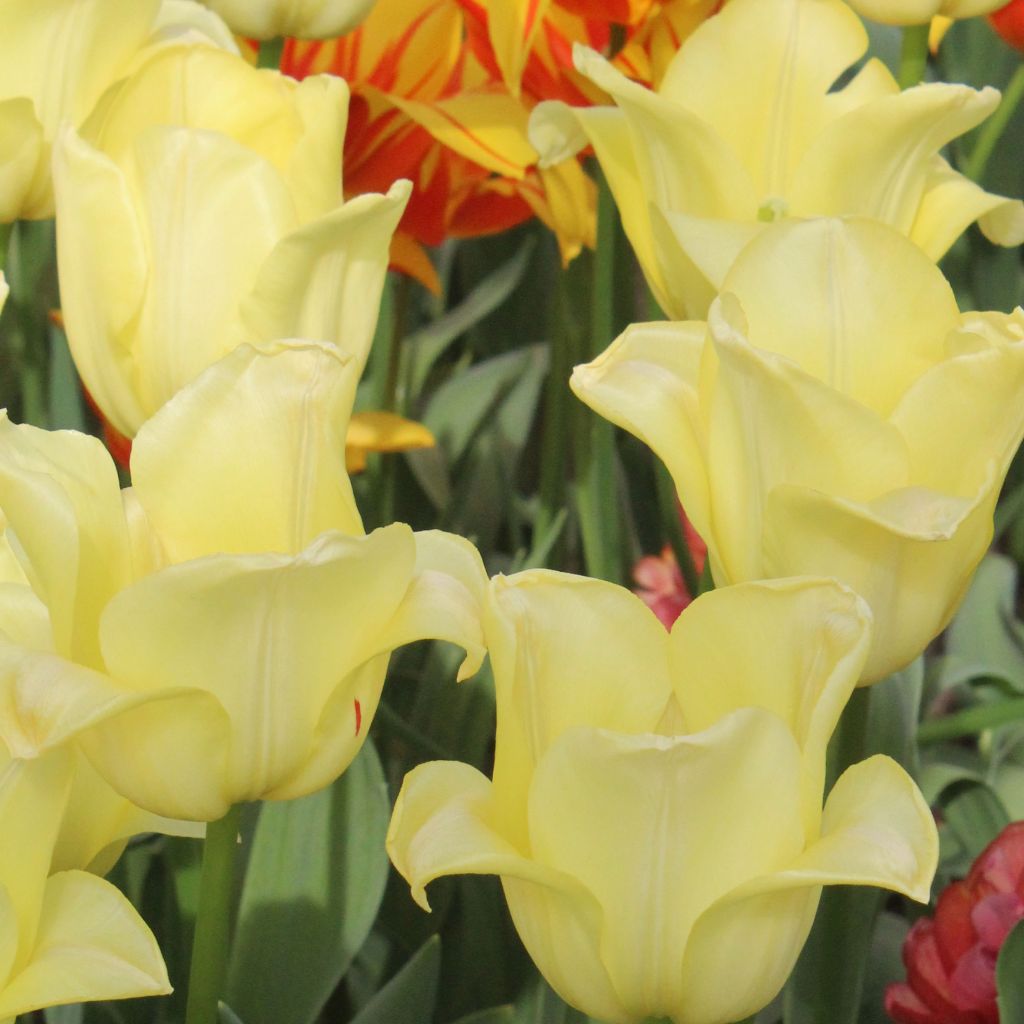

Tulipe Triomphe World Friendship
Tulipa World Friendship - Triumph Tulip
Tulipa Triumph World Friendship
Triumph Tulip
I ordered these pale yellow tulips with green foliage, but unfortunately I received a different tulip. The flowers are more of a golden yellow and the foliage is edged with white. Disappointing..." Analyse du texte traduit : - La traduction des mots "tulipes jaune pâle" par "pale yellow tulips" est correcte. - La traduction du mot "feuillage" par "foliage" est correcte. - La traduction du mot "vert" par "green" est correcte. - La traduction du mot "malheureusement" par "unfortunately" est correcte. - La traduction du mot "reçu" par "received" est correcte. - La traduction du mot "autre" par "different" est correcte. - La traduction du mot "plutôt" par "more" est correcte. - La traduction du mot "jaune d'or" par "golden yellow" est correcte. - La traduction du mot "bordé" par "edged" est correcte. - La traduction du mot "blanc" par "white" est correcte. - La traduction du mot "Décevant..." par "Disappointing..." est correcte. La traduction du texte est correcte sur le plan linguistique.
Edmund, 01/04/2019
Why not try an alternative variety in stock?
View all →Order in the next for dispatch today!
Dispatch by letter from €3.90.
Delivery charge from €5.90 Oversize package delivery charge from €6.90.
More information
This item is not available in your country.
Schedule delivery date,
and select date in basket
This plant carries a 6 months recovery warranty
More information
We guarantee the quality of our plants for a full growing cycle, and will replace at our expense any plant that fails to recover under normal climatic and planting conditions.
From €5.90 for pickup delivery and €6.90 for home delivery
Express home delivery from €8.90.

Does this plant fit my garden?
Set up your Plantfit profile →
Description
The Tulip Triumph 'World Friendship' is an emblematic French variety, dedicated to fraternity between peoples in November 2013, during the 5th World Tulip Summit. Not very tall, it produces a large flower of a pure and bright light yellow, and proves remarkably resistant to tulip diseases. Particularly well adapted to Flemish or Norman summers, cool and humid, it naturalises and faithfully blooms year after year in the garden. Generous, this very beautiful flower blooms in the middle of the tulip season, in April, depending on the climate.
The 'World Friendship' Tulip belongs to the Liliaceae family. Born in 1988 in France, it is the result of relentless selection work, carried out at INRA in Brest by Professor Marcel Lenard. In autumn 2014, 15,000 bulbs of this new variety were planted in Disneyland Paris. Of horticultural origin, it is currently classified in the 'Triumph' group, whose main characteristic is to have narrow cup-shaped flowers. Perched on sturdy 35 cm (14in) tall stems, above the widely lanceolate leaves, the large, elegant flowers are a pure, soft and luminous yellow, washed with light lemon yellow reflections. They have a narrow cup shape and show six "petals" (more precisely tepals) of thick texture. This variety is not sensitive to diseases that cause bulbs to disappear when the soil remains moist in summer. Flowering takes place in April, in the heart of the tulip season.
The Triumph Tulip 'World Friendship' finds its place in large beds and borders, planted alone or in the company of blue flowers (forget-me-nots, bellflowers, grape hyacinths) or white ones. The purity of its colour allows for numerous associations with perennials or other tulips. A beautiful white variety (Tulip 'Blanche Neige', or 'White Dream') will also accompany it with elegance in a pot or in a border. Also combine it with daffodils, jonquils, hyacinths or Corsican hellebores and euphorbias and you will obtain surprising scenes. This tulip also embellishes balconies and terraces very well. It is also ideal for creating elegant bouquets. In a vase, use very little water, just a little at the bottom is enough! Furthermore, if your tulips open too quickly, you can add two to three ice cubes to the vase every day.
Regarding botanical species: tulip species are found from Western Europe to China and Japan, passing through Eastern Europe, Asia Minor, and Central Asia. Their distribution area also includes North Africa and the Indian subcontinent. The centre of diversity of the genus is located in the Pamir and Hindu Kush mountains and the steppes of Kazakhstan.
In Europe, there are various wild species, most of which are endangered, including the well-known Agen Tulip (Tulipa agenensis), and one of the most common is the wild tulip (Tulipa sylvestris), which commonly used to grow sheltered by vineyards. Its subspecies australis is known as the southern tulip.
Tulipa World Friendship - Triumph Tulip in pictures
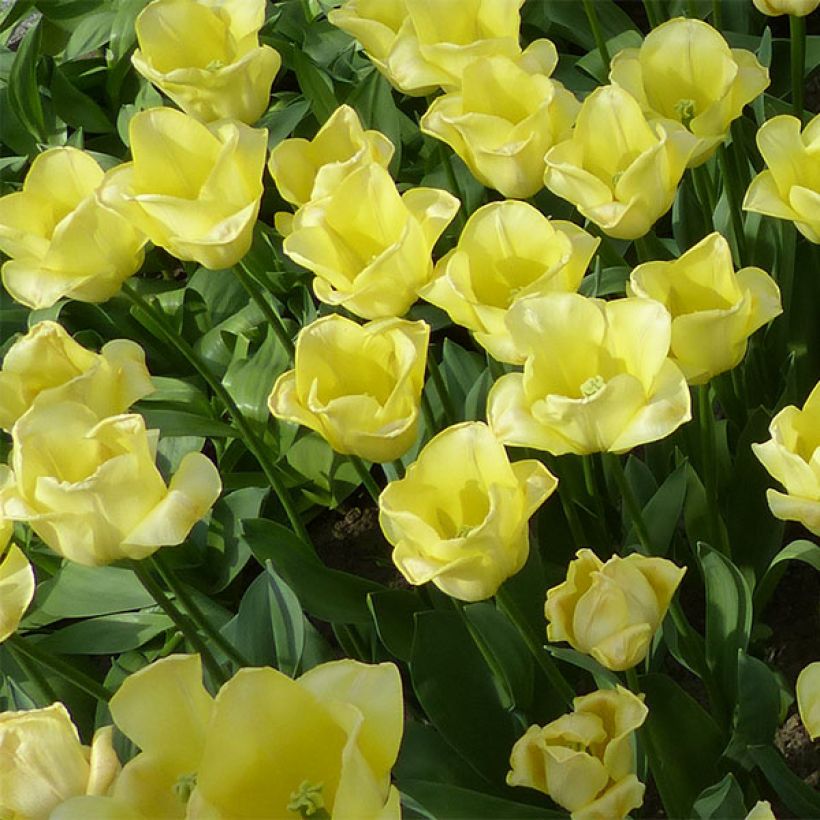

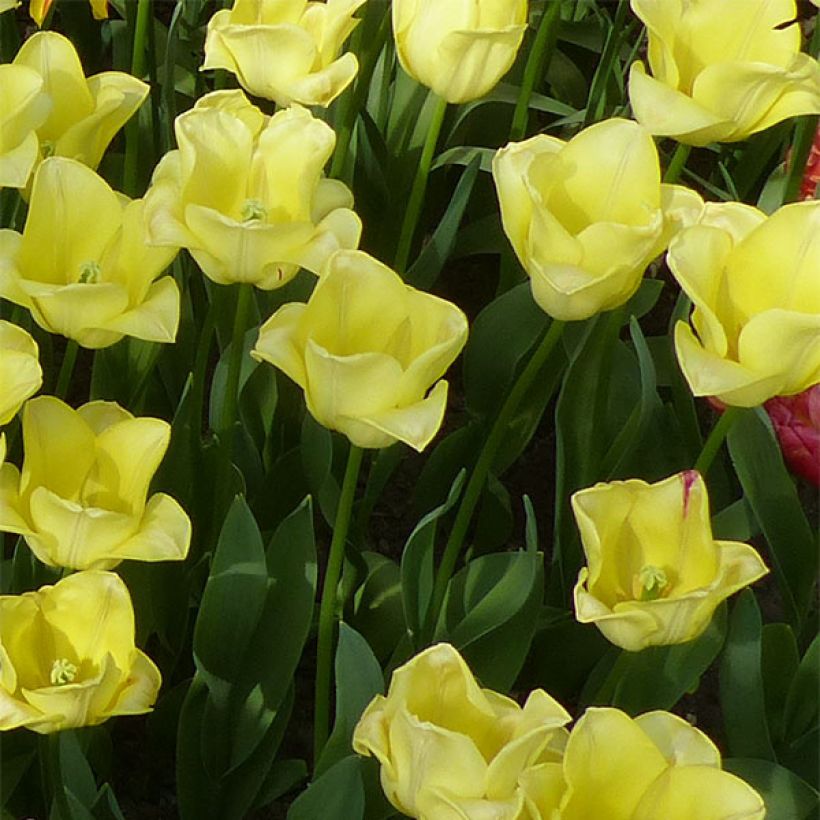

Plant habit
Flowering
Foliage
Botanical data
Tulipa
Triumph
World Friendship
Liliaceae
Triumph Tulip
Cultivar or hybrid
Other Triumph Tulips
Planting and care
Plant the bulbs in autumn, from September to December, at a depth of 15 cm (6in), spacing them 10 cm (4in) apart. The planting should be done in ordinary soil, slightly acidic, neutral, or slightly alkaline, loose, well worked, and well-draining. Never add uncomposted manure or compost to the planting soil, as this could cause the bulbs to rot. The 'World Friendship' tulip will grow well in moist soil, even heavy and clayey, throughout the year, and in dry conditions in summer. Plant it in a good, sunny or semi-shaded location. Once flowering is over, it is preferable to remove the fruits to avoid exhausting the plant.
Planting period
Intended location
Care
- , onOrder confirmed
Reply from on Promesse de fleurs
Tulips
Haven't found what you were looking for?
Hardiness is the lowest winter temperature a plant can endure without suffering serious damage or even dying. However, hardiness is affected by location (a sheltered area, such as a patio), protection (winter cover) and soil type (hardiness is improved by well-drained soil).

Photo Sharing Terms & Conditions
In order to encourage gardeners to interact and share their experiences, Promesse de fleurs offers various media enabling content to be uploaded onto its Site - in particular via the ‘Photo sharing’ module.
The User agrees to refrain from:
- Posting any content that is illegal, prejudicial, insulting, racist, inciteful to hatred, revisionist, contrary to public decency, that infringes on privacy or on the privacy rights of third parties, in particular the publicity rights of persons and goods, intellectual property rights, or the right to privacy.
- Submitting content on behalf of a third party;
- Impersonate the identity of a third party and/or publish any personal information about a third party;
In general, the User undertakes to refrain from any unethical behaviour.
All Content (in particular text, comments, files, images, photos, videos, creative works, etc.), which may be subject to property or intellectual property rights, image or other private rights, shall remain the property of the User, subject to the limited rights granted by the terms of the licence granted by Promesse de fleurs as stated below. Users are at liberty to publish or not to publish such Content on the Site, notably via the ‘Photo Sharing’ facility, and accept that this Content shall be made public and freely accessible, notably on the Internet.
Users further acknowledge, undertake to have ,and guarantee that they hold all necessary rights and permissions to publish such material on the Site, in particular with regard to the legislation in force pertaining to any privacy, property, intellectual property, image, or contractual rights, or rights of any other nature. By publishing such Content on the Site, Users acknowledge accepting full liability as publishers of the Content within the meaning of the law, and grant Promesse de fleurs, free of charge, an inclusive, worldwide licence for the said Content for the entire duration of its publication, including all reproduction, representation, up/downloading, displaying, performing, transmission, and storage rights.
Users also grant permission for their name to be linked to the Content and accept that this link may not always be made available.
By engaging in posting material, Users consent to their Content becoming automatically accessible on the Internet, in particular on other sites and/or blogs and/or web pages of the Promesse de fleurs site, including in particular social pages and the Promesse de fleurs catalogue.
Users may secure the removal of entrusted content free of charge by issuing a simple request via our contact form.
The flowering period indicated on our website applies to countries and regions located in USDA zone 8 (France, the United Kingdom, Ireland, the Netherlands, etc.)
It will vary according to where you live:
- In zones 9 to 10 (Italy, Spain, Greece, etc.), flowering will occur about 2 to 4 weeks earlier.
- In zones 6 to 7 (Germany, Poland, Slovenia, and lower mountainous regions), flowering will be delayed by 2 to 3 weeks.
- In zone 5 (Central Europe, Scandinavia), blooming will be delayed by 3 to 5 weeks.
In temperate climates, pruning of spring-flowering shrubs (forsythia, spireas, etc.) should be done just after flowering.
Pruning of summer-flowering shrubs (Indian Lilac, Perovskia, etc.) can be done in winter or spring.
In cold regions as well as with frost-sensitive plants, avoid pruning too early when severe frosts may still occur.
The planting period indicated on our website applies to countries and regions located in USDA zone 8 (France, United Kingdom, Ireland, Netherlands).
It will vary according to where you live:
- In Mediterranean zones (Marseille, Madrid, Milan, etc.), autumn and winter are the best planting periods.
- In continental zones (Strasbourg, Munich, Vienna, etc.), delay planting by 2 to 3 weeks in spring and bring it forward by 2 to 4 weeks in autumn.
- In mountainous regions (the Alps, Pyrenees, Carpathians, etc.), it is best to plant in late spring (May-June) or late summer (August-September).
The harvesting period indicated on our website applies to countries and regions in USDA zone 8 (France, England, Ireland, the Netherlands).
In colder areas (Scandinavia, Poland, Austria...) fruit and vegetable harvests are likely to be delayed by 3-4 weeks.
In warmer areas (Italy, Spain, Greece, etc.), harvesting will probably take place earlier, depending on weather conditions.
The sowing periods indicated on our website apply to countries and regions within USDA Zone 8 (France, UK, Ireland, Netherlands).
In colder areas (Scandinavia, Poland, Austria...), delay any outdoor sowing by 3-4 weeks, or sow under glass.
In warmer climes (Italy, Spain, Greece, etc.), bring outdoor sowing forward by a few weeks.
